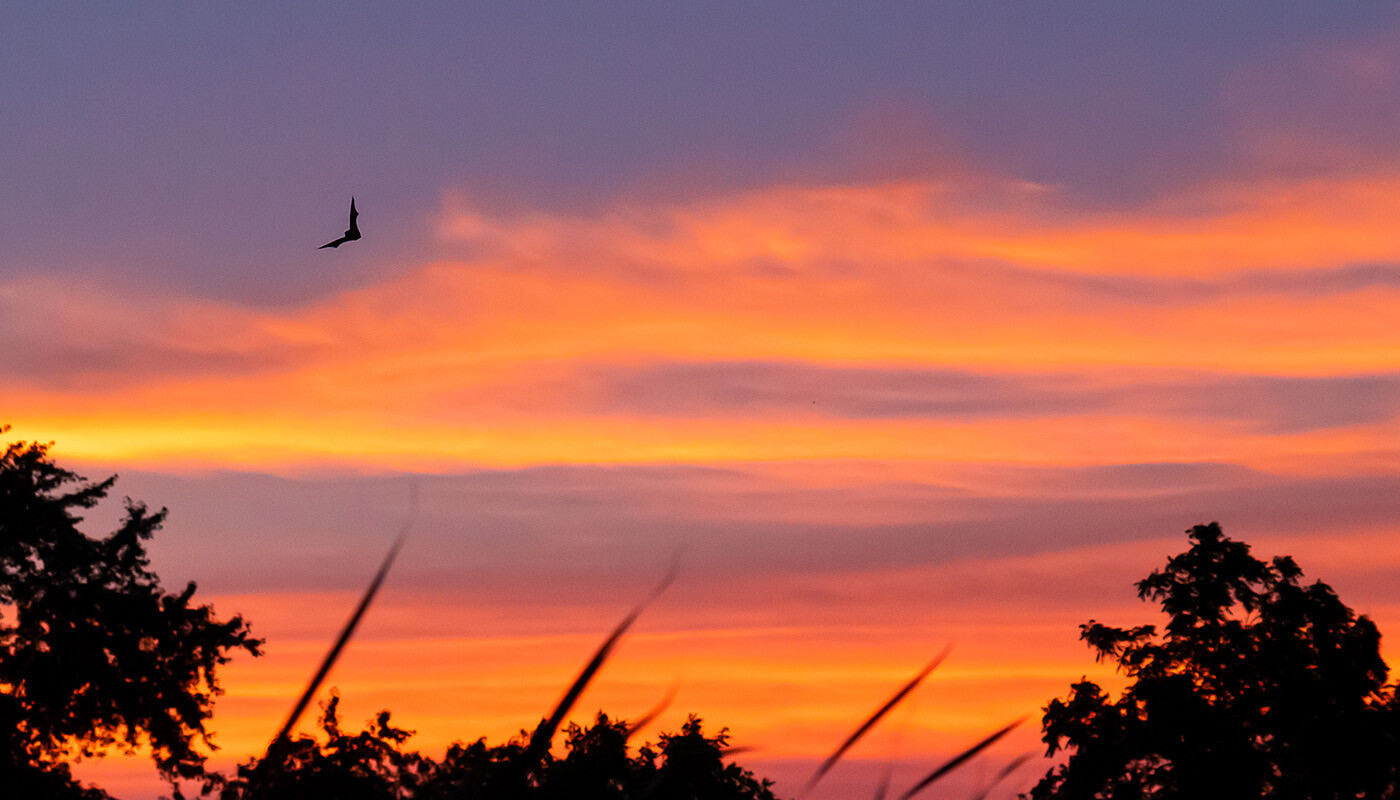When twilight descends, Cook County residents may notice bats emerging like messengers of the night. As they glide through the forest, bats produce a melodic ensemble of screeching and clicking sounds, and their fluctuating wings create little rushes of air, creating a nighttime symphony.
Did you know that bats make up one-fifth of all mammal species on earth? There are more than 1,300 known species that can be found throughout the world, eight of which have been documented in the Forest Preserves of Cook County. They vary in size, from the northern long-eared bat (8.9-to-10.2-inch wingspan) to the hoary bat (up to 16-inch wingspan).
Bats are the only mammals capable of ongoing flight. This is because their wings are formed by a thin membrane of skin stretched between finger bones, allowing bats to masterly maneuver through the air with precision. Many bat species send high-frequency sounds and interpret echoes to navigate and locate their prey—known as echolocation. This ability enables bats to travel into dark areas and catch insects.
Bats play a crucial role in our ecosystem, helping to control populations of pests such as mosquitoes. They are well-known insect eaters, consuming large quantities each night. Globally, some bat species are also important pollinators, playing a vital role in the reproduction of various plants. They love to visit flowers, spreading pollen that may have gotten stuck to their faces and bodies.
Researchers from the Forest Preserves of Cook County and Friends of the Chicago River have found an increase in bat activity near water, relying on waterways as a vital resource and ideal habitat to forage for their insect prey along the riverbanks.
By engaging in volunteering, you can actively contribute to bat research, which, in turn, aids the Forest Preserves of Cook County and its partners in organizing initiatives that promote habitat stability and prevent habitat degradation. As of 2020, Friends of the Chicago River successfully installed six maternity colony structures for bats.
Friends of the Chicago River is looking for wildlife monitors to visit these structures and monitor their use by bats. To learn, more visit chicagoriver.org/get-involved.

